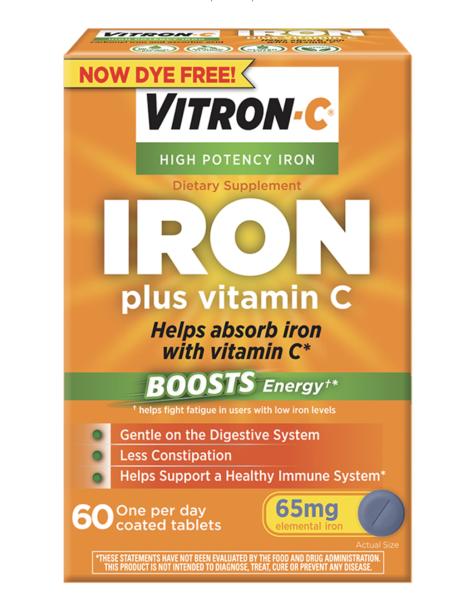Ascorbic acid/carbonyl iron Disease Interactions
There are 5 disease interactions with ascorbic acid/carbonyl iron.
Ferrous salts (applies to ascorbic acid/carbonyl iron) hemoglobin abnormalities
Major Potential Hazard, Moderate plausibility. Applicable conditions: Hemoglobinopathy, Blood Transfusion
There is no excretory mechanism for iron. Iron will correct only hemoglobin abnormalities due to iron deficiency and should not be used to treat conditions such as thalassemia, hemosiderosis, hemochromatosis, normocytic anemia (unless iron deficiency exists), or in patients receiving blood transfusions. Clinical monitoring of erythropoietic function and ferritin levels is recommended.
Ascorbic acid (vitamin C) (applies to ascorbic acid/carbonyl iron) hemolysis
Moderate Potential Hazard, Moderate plausibility. Applicable conditions: G-6-PD Deficiency
Acute hemolysis following administration of high doses of ascorbic acid in patients with glucose-6-phosphate deficiency (G6PD) has been reported. Ascorbic acid should be administered cautiously and dosages modified in patients with G6PD.
Ascorbic acid (vitamin C) (applies to ascorbic acid/carbonyl iron) kidney stones
Moderate Potential Hazard, Moderate plausibility. Applicable conditions: Nephrolithiasis
Large doses of ascorbic acid have lead to hyperoxaluria in 5% of patients. Ascorbic acid can acidify urine resulting in precipitation of urate, cystine, or oxalate stones. Ascorbic acid should be administered cautiously and dosages modified in patients predisposed to renal stones. Clinical monitoring of urinalysis for pH and crystal formation is recommended.
Ascorbic acid (vitamin C) (applies to ascorbic acid/carbonyl iron) sodium
Moderate Potential Hazard, Low plausibility. Applicable conditions: Hypernatremia, Hypertension
Ascorbic acid preparations contain sodium. The sodium content should be considered when used in patients with sodium restricted diets and conditions require sodium restriction, such as congestive heart failure, hypertension, and fluid retention.
Ascorbic acid (vitamin C) (applies to ascorbic acid/carbonyl iron) dialysis
Minor Potential Hazard, High plausibility. Applicable conditions: hemodialysis
Ascorbic acid is removed by dialysis.
Switch to professional interaction data
Ascorbic acid/carbonyl iron drug interactions
There are 116 drug interactions with ascorbic acid/carbonyl iron.
Ascorbic acid/carbonyl iron alcohol/food interactions
There are 2 alcohol/food interactions with ascorbic acid/carbonyl iron.
More about ascorbic acid/carbonyl iron
- ascorbic acid/carbonyl iron consumer information
- Check interactions
- Compare alternatives
- Reviews (1)
- Side effects
- Drug class: vitamin and mineral combinations
- En español
Related treatment guides
Drug Interaction Classification
| Highly clinically significant. Avoid combinations; the risk of the interaction outweighs the benefit. | |
| Moderately clinically significant. Usually avoid combinations; use it only under special circumstances. | |
| Minimally clinically significant. Minimize risk; assess risk and consider an alternative drug, take steps to circumvent the interaction risk and/or institute a monitoring plan. | |
| No interaction information available. |
See also:
Further information
Always consult your healthcare provider to ensure the information displayed on this page applies to your personal circumstances.


